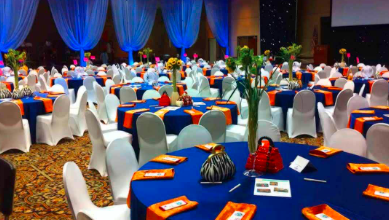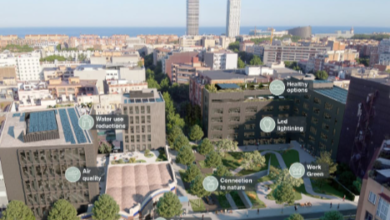The Beauty and Versatility of Precut Stained Glass Shapes: A Comprehensive Guide

Stained glass art has captivated people for centuries, with its vibrant colors and intricate designs adorning everything from grand cathedrals to modest homes.
While traditional stained glass projects require significant skill and time to cut and fit each piece, precut stained glass shapes offer an accessible and convenient alternative for both novice and experienced artists.
This comprehensive guide explores the world of precut stained glass shapes, their benefits, applications, and tips for creating stunning stained glass art.
Introduction to Precut Stained Glass Shapes
What are Precut Stained Glass Shapes?
Precut stained glass shapes are pieces of stained glass that have been pre-cut into various forms and sizes, ready for immediate use in stained glass projects.
These shapes come in a wide range of designs, including geometric forms, floral motifs, animals, and more intricate patterns.
By eliminating the need for manual cutting, precut shapes make stained glass art more accessible and less time-consuming.
Historical Background
The art of stained glass dates back to ancient times, with some of the earliest examples found in Roman and Egyptian ruins.
The technique flourished during the Gothic period, particularly in Europe, where stained glass windows became a prominent feature of churches and cathedrals.
Traditional stained glass creation involves cutting glass into specific shapes, leading these shapes into place, and soldering them together—a meticulous and labor-intensive process.
The advent of precut shapes has streamlined this process, making it easier for hobbyists and professionals alike to create beautiful stained glass pieces.
Benefits of Using Precut Stained Glass Shapes
Time-Saving Convenience
One of the most significant advantages of using precut stained glass shapes is the time saved on cutting and shaping each piece.
This allows artists to focus more on design and assembly, accelerating the creation process and making it feasible to complete projects more quickly.
Consistent Quality and Precision
Precut shapes are cut using precise machinery, ensuring uniformity and accuracy. This consistency is particularly beneficial for beginners who may struggle with manual glass cutting and for complex designs that require exact measurements.
Reduced Waste
Manual glass cutting often results in waste due to mistakes or breakages. Precut shapes minimize waste by providing ready-to-use pieces, making them a more economical choice, especially for large projects.
Safety
Cutting glass can be hazardous, with the risk of sharp edges and glass splinters. Precut shapes reduce the need for handling raw glass sheets, enhancing safety and making the art form more accessible to a wider audience, including children and beginners.
Read also Choosing the Right Security Company in Anaheim: What to Consider
Types of Precut Stained Glass Shapes
Geometric Shapes
Geometric shapes such as squares, rectangles, circles, and triangles are versatile and can be used in a variety of designs. They are ideal for creating patterns and borders or as foundational pieces in more complex designs.
Floral and Nature Motifs
Precut shapes featuring flowers, leaves, butterflies, and other natural elements are popular choices for decorative panels, suncatchers, and window hangings. These shapes add a touch of nature’s beauty to any stained glass project.
Animals and Figures
Animal shapes, including birds, fish, and pets, as well as human figures, add character and storytelling elements to stained glass art. These shapes can be used in thematic projects or as standalone pieces.
Abstract and Custom Designs
For those seeking unique or non-traditional designs, abstract shapes and custom-cut pieces offer endless creative possibilities. These shapes can be combined to create modern, artistic compositions.
Applications of Precut Stained Glass Shapes
Home Décor
Precut stained glass shapes are widely used in home décor, adding color and elegance to various settings. Popular applications include:
- Suncatchers: Hanging in windows, these pieces catch the sunlight, creating beautiful reflections and adding a splash of color to the room.
- Window Panels: Custom-designed window panels can enhance privacy while adding artistic flair to a home.
- Lampshades: Stained glass lampshades cast colorful, warm light, creating a cozy atmosphere.
- Wall Art: Framed stained glass pieces serve as stunning wall art, adding a unique touch to interior design.
Religious and Spiritual Art
Stained glass has a long history in religious art, with churches and temples using it to depict sacred scenes and symbols. Precut shapes make it easier to create intricate designs for:
- Windows: Large stained glass windows depicting religious stories and symbols.
- Altars and Shrines: Decorative panels for altars and shrines.
- Religious Artifacts: Crosses, stars, and other religious symbols.
Gifts and Personalized Items
Handmade stained glass items make thoughtful and personalized gifts. Precut shapes can be used to create:
- Personalized Nameplates: Custom designs featuring names or initials.
- Holiday Ornaments: Festive designs for Christmas, Easter, and other holidays.
- Jewelry and Accessories: Small shapes can be used to create unique pendants, earrings, and other accessories.
Educational Projects
Precut stained glass shapes are excellent for educational projects, helping students learn about art, geometry, and history. These projects can be:
- Classroom Projects: Group activities where students create collaborative stained glass murals.
- Workshops and Classes: Teaching the basics of stained glass art in a structured setting.
- History Lessons: Exploring the historical significance and techniques of stained glass art.
Tips for Working with Precut Stained Glass Shapes
Planning Your Design
Before starting a project, sketch out your design on paper. Consider the colors and shapes you will use and how they will fit together. This planning stage is crucial for ensuring a cohesive and visually appealing final piece.
Preparing Your Work Area
Set up a clean, organized workspace. Use a flat, sturdy surface covered with a soft cloth to protect the glass. Keep your tools and supplies within easy reach to streamline the process.
Arranging the Shapes
Lay out the precut shapes on your work surface according to your design plan. This dry fit allows you to make adjustments and ensure that everything fits together correctly before applying any adhesive or solder.
Using Adhesives and Lead Came
Depending on your project, you may use adhesives or lead to assemble your stained glass pieces:
- Adhesives: For projects like suncatchers or decorative panels, clear-drying adhesives can securely attach the glass pieces to a backing or frame.
- Lead Came: For traditional stained glass windows, lead came (H-shaped strips of lead) is used to join the pieces together. This technique requires soldering to secure the joints.
Soldering Techniques
If your project involves soldering, follow these steps for a professional finish:
- Flux Application: Apply flux to the joints where the lead meets. Flux helps the solder flow smoothly and adhere properly.
- Soldering Iron: Use a soldering iron to melt the solder and join the lead-card pieces. Work carefully to avoid overheating the glass.
- Cleaning: Once soldered, clean the project thoroughly to remove any flux residue. Use a glass cleaner and a soft cloth for a streak-free finish.
Finishing Touches
Add any finishing touches to enhance the durability and appearance of your stained glass piece:
- Patina: Apply a patina to the soldered joints for a polished look. Patina comes in various colors, such as black, copper, and silver.
- Sealing: If your project will be exposed to the elements, apply a sealant to protect the glass and solder from weathering.
- Framing: Consider framing your finished piece for added stability and a professional presentation.
Advanced Techniques and Creative Ideas
Mosaic Stained Glass
Combine precut stained glass shapes to create mosaic designs. This technique involves arranging small pieces of glass in a pattern and securing them with grout or adhesive.
Layered Glass Art
Create depth and dimension by layering precut shapes. This method involves stacking glass pieces on top of each other and securing them with adhesive or solder.
Mixed Media Projects
Incorporate other materials into your stained glass projects for a mixed media approach. Consider combining glass with metals, wood, or ceramics to add texture and interest.
Lighted Displays
Enhance your stained glass art with lighting. Use LED strips or lightboxes to illuminate your pieces from behind, highlighting the vibrant colors and intricate details.
Conclusion
Precut stained glass shapes offer a world of creative possibilities for artists of all skill levels. Their convenience, precision, and versatility make them an excellent choice for a wide range of projects, from home décor to educational activities. By understanding the benefits, applications, and techniques associated with precut stained glass shapes, you can unlock your artistic potential and create stunning works of art that captivate and inspire.
Whether you are a seasoned stained glass artist or a beginner exploring this beautiful medium for the first time, precut shapes provide an accessible and enjoyable way to bring your creative visions to life. With careful planning, the right tools, and a bit of practice, you can master the art of stained glass and create pieces that shine with color and light for years to come.




